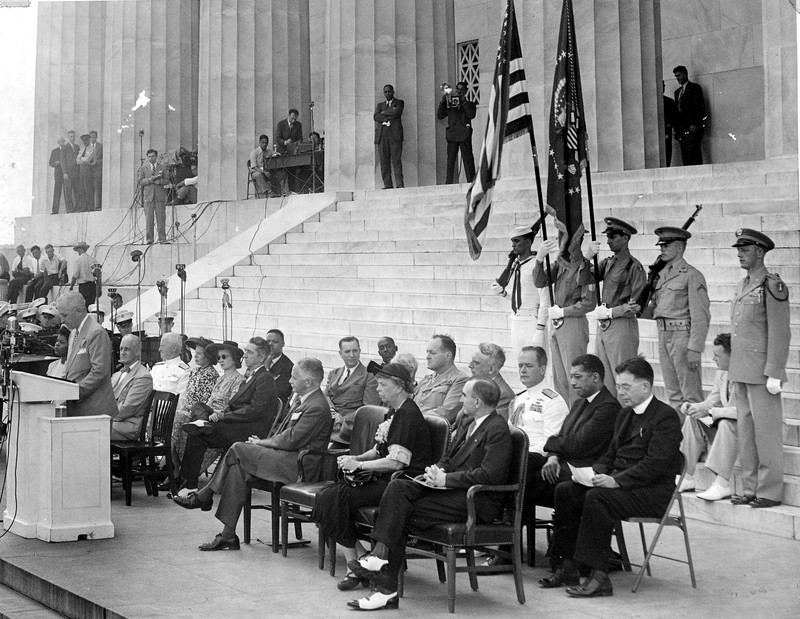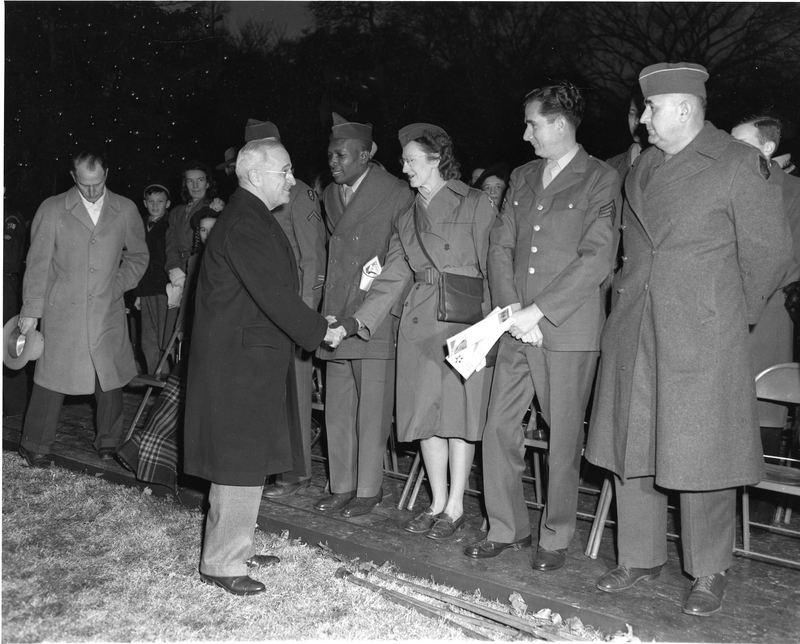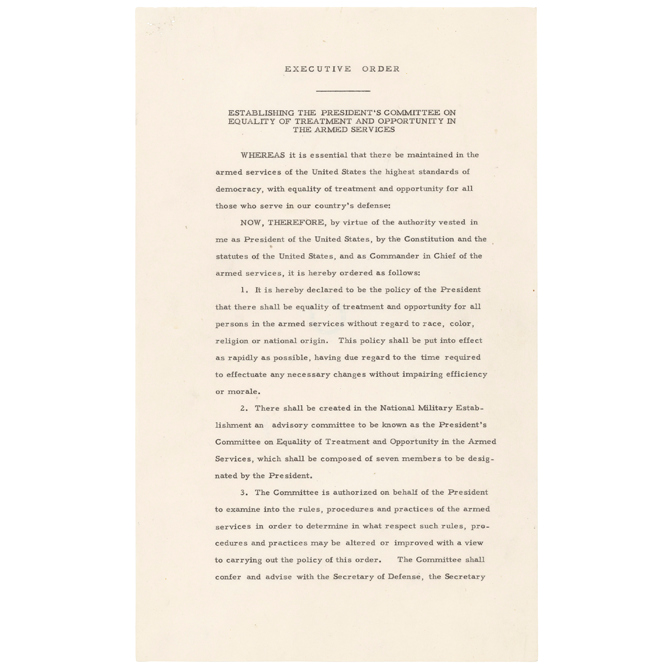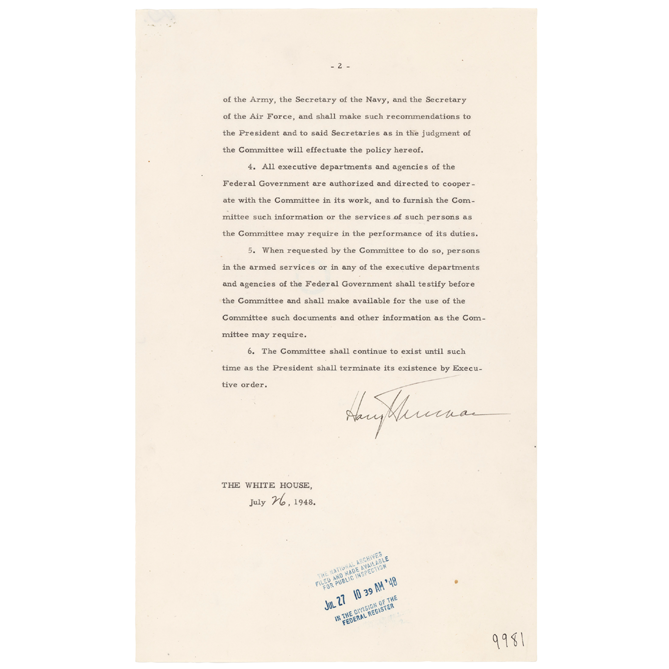Why EO 9981
Passing of Executive Order 9981
Harry S Truman became president in April 1945 after Franklin Delano Roosevelt's death. President Truman was moved by the racial violence and the inhumane treatment of African Americans at home. He proposed Civil Rights and Equality for all, knowing that he will not get the support from Congress.
"President Truman signs Executive Order 9981 at desk, a bill to racially integrate the military / military advisors stand in BG. Truman signs military integration bill on July 26, 1948 in Washington DC" (Footage by Getty Images), https://www.gettyimages.com/detail/video/president-truman-signs-executive-order-9981-at-desk-a-news-footage/154054916
Congress refused to pass any of Truman’s civil rights proposals. Most delegates from Southern states refused to support President Truman. President Truman evaded a Senate Filibuster, and having realized that legislation like this would not make it through Congress, he used an executive order to end military segregation. Executive Order 9981, signed on July 26, 1948, "prohibited discrimination against military personnel because of race, color, religion or national origin, integrating the armed forces and establishing the President’s Committee on Equality of Treatment and Opportunity in the Armed Services, or the Fahy Committee."
"William Holloman, who was drafted into the Air Force as a US Army Air Corps Reserve in 1942, says the most positive thing that came out of World War II was Executive Order 9981." Courtesy of The National WWII Museum.
"Executive Order 9981", July 26, 1948, https://catalog.archives.gov/id/300009

"Address Before the NAACP delivered 29 June 1947, Lincoln Memorial, Washington," D.C., https://www.americanrhetoric.com/speeches/harrystrumannaacp.htm
"Pres. Truman, speaking at the Lincoln Memorial before the vast throng of Americans, demands that we fight harder to provide equality for all our citizens"

"Truman greets members of the armed services at the lighting of the White House Christmas tree." (Abbie Rowe/National Park Service via Harry S. Truman Library and Museum)

